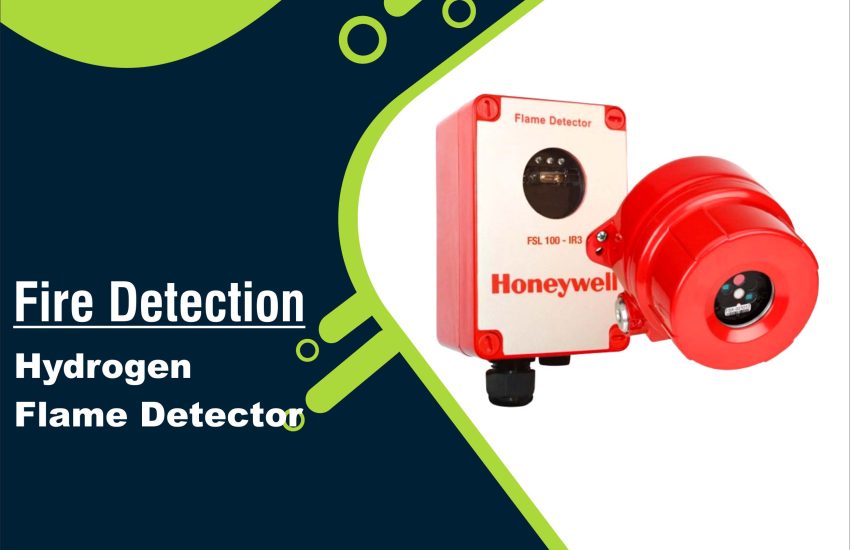Hydrogen Flame Detector are crucial safety devices in environments where hydrogen gas is present. These detectors detect flames early and help prevent dangerous accidents. In this guide, we will explore hydrogen flame detectors in detail, including their types, working principles, installation process, benefits, and factors to consider when choosing one.
What is a Hydrogen Flame Detector?
A hydrogen flame detector detects flames by sensing infrared (IR) or ultraviolet (UV) radiation. Hydrogen gas is highly flammable, and a spark or heat source can easily ignite it. When this happens, a hydrogen flame detector alerts operators to prevent fire escalation and protect people and equipment.
Why is a Hydrogen Flame Detector Important?
Hydrogen flame detectors play an essential role in preventing fires or explosions in environments where hydrogen is used. Without these detectors, you risk not noticing a fire until it’s too late, leading to potential damage, injury, or loss of life.
Types of Hydrogen Flame Detectors
Hydrogen flame detectors come in several types. Each uses a different method to identify flames. Here are the most common types:
1. Infrared (IR) Flame Detectors
IR flame detectors detect the infrared radiation emitted by flames. Since hydrogen flames produce significant IR radiation, these detectors are highly effective for identifying hydrogen fires.
2. Ultraviolet (UV) Flame Detectors
UV flame detectors identify ultraviolet radiation. However, these detectors are less effective for hydrogen flames, as they emit lower levels of UV radiation compared to other fuels.
3. Combined UV/IR Flame Detectors
These detectors use both UV and IR technologies. They provide a broader detection range, making them ideal for environments where different types of flames may occur.
4. Dual-Wavelength Flame Detectors
Dual-wavelength detectors operate at two light wavelengths. These detectors focus specifically on the radiation emitted by hydrogen flames, offering more precise detection.
How Hydrogen Flame Detectors Work
Hydrogen flame detectors work by continuously monitoring their environment for specific radiation. When a hydrogen flame ignites, it emits radiation, primarily in the IR or UV spectrum. The detector senses this radiation, and if it exceeds a predefined threshold, the detector activates an alarm.
The Detection Process
When the detector senses the radiation from a hydrogen flame, it immediately processes the signal. Once confirmed, the system triggers an alert, allowing for a fast response. This system prevents the fire from spreading and minimizes potential damage.
Benefits of Hydrogen Flame Detectors
Hydrogen flame detectors offer numerous advantages. These devices are vital in protecting people, property, and equipment in environments where hydrogen gas is present.
1. Early Flame Detection
Hydrogen flame detectors detect fires early, giving operators time to react and prevent the fire from growing. The quicker the detection, the safer the environment.
2. Increased Accuracy
These detectors are specially designed to identify the radiation emitted by hydrogen flames. As a result, they offer high accuracy and fewer false alarms.
3. Enhanced Safety
By alerting personnel early, these detectors reduce the risk of accidents. Early flame detection can prevent injuries and even save lives.
4. Minimal False Alarms
Modern hydrogen flame detectors are equipped with advanced technology that reduces false alarms caused by environmental factors. For example, sunlight or electrical interference won’t trigger an alarm.
5. Easy Installation and Maintenance
Many hydrogen flame detectors are designed for easy installation. They also require minimal maintenance, ensuring long-term reliability.
How to Install Hydrogen Flame Detectors
Proper installation of hydrogen flame detectors ensures their effectiveness. Follow these guidelines to install them properly:
1. Identify Risk Areas
Start by identifying areas where hydrogen gas is used, stored, or transported. These areas may include hydrogen storage tanks, refueling stations, or laboratories.
2. Choose Proper Locations
Place detectors where they can effectively monitor for hydrogen flames. Avoid placing them near heat sources, vents, or areas with high air movement that might cause interference.
3. Ensure Proper Calibration
Calibrate detectors based on the specific wavelengths emitted by hydrogen flames. Calibration ensures the detectors are sensitive enough to detect fires but not overly sensitive to other environmental factors.
4. Regular Testing
Test hydrogen flame detectors regularly to ensure they are working correctly. Many models come with self-testing features to make this process easier.
5. Integrate with Safety Systems
For enhanced protection, integrate hydrogen flame detectors with alarms, fire suppression systems, and emergency shutdown mechanisms. This creates a comprehensive safety network.
Key Considerations When Choosing a Hydrogen Flame Detector
Choosing the right hydrogen flame detector involves several important factors. Keep these in mind when making your decision:
1. Detection Technology
Choose a detector that uses the appropriate detection technology (IR, UV, or dual). The type you choose should match your environment and the potential flame characteristics.
2. Response Time
Look for detectors with a quick response time. The faster they detect a flame, the sooner you can react. A good detector should trigger an alarm within seconds.
3. Environmental Compatibility
Ensure the detector can operate in the specific environmental conditions of your facility. Factors like temperature, humidity, and the presence of potential interference should be taken into account.
4. Integration with Existing Systems
Select detectors that can easily integrate with your existing safety systems, such as alarms or fire suppression systems. Seamless integration enhances overall protection.
5. Maintenance and Support
Choose a reliable detector with good customer support and easy-to-maintain features. Regular maintenance is essential for keeping the system in optimal working condition.
Conclusion
Hydrogen Flame Detector are essential for ensuring safety in environments where hydrogen is present. They detect the unique radiation from hydrogen flames, alerting operators before the fire can spread. Early detection helps prevent accidents, injuries, and damage to equipment. Choose the right detector for your needs, install it correctly, and ensure it’s tested regularly to maintain optimal performance.


